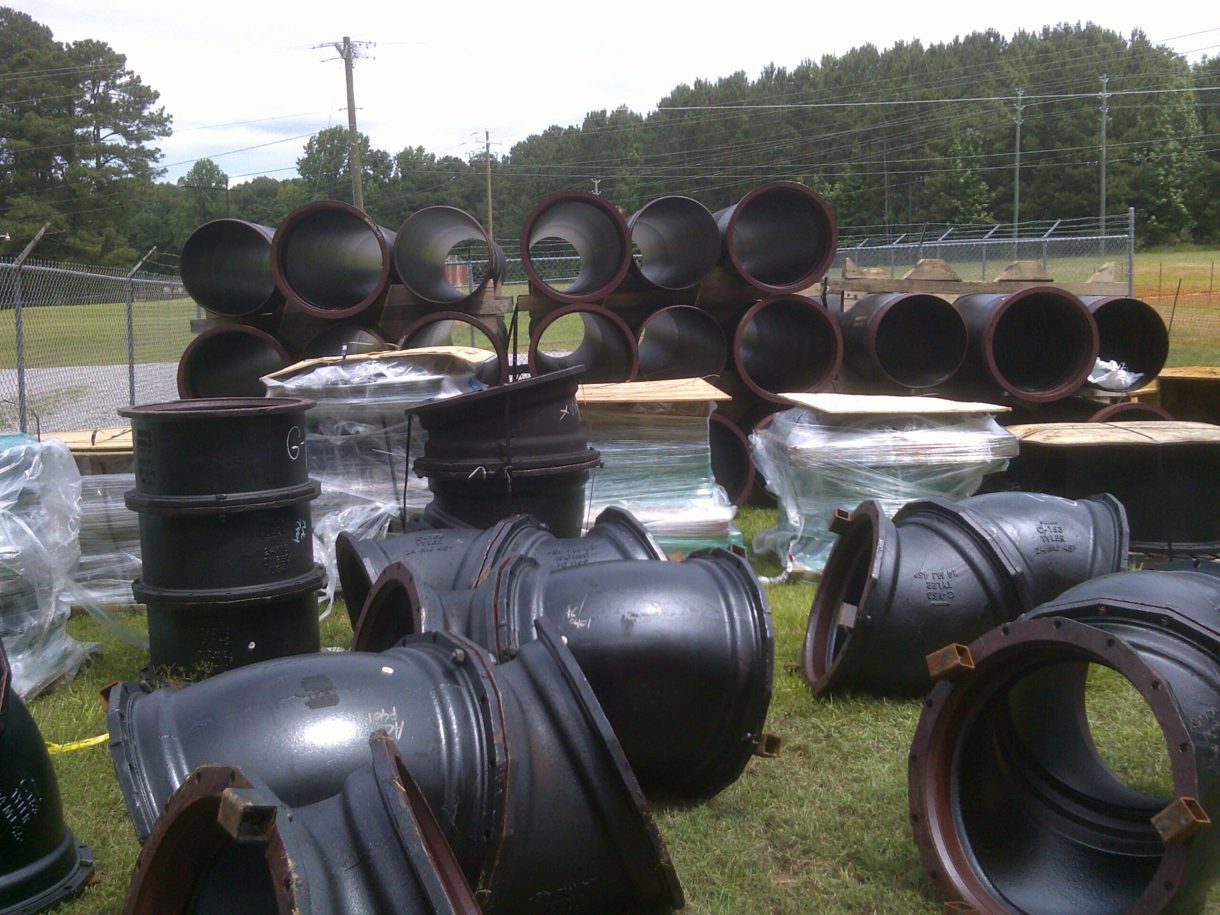
Supply-chain bottlenecks. Inflation. Shortage of materials. In the past year, the effects of these problems have made their way into the everyday lives of U.S. residents, be it the cost of your meat and potatoes, or while filling up your car with gas.
The AEC (Architecture, Engineering, and Construction) sector has also felt the pain, and availability and cost of materials have hit projects and contractors equally. There have been delays in starts due to material availability, and costs have ballooned.
Pipes made from different materials have varying lead times when it comes to procurement, be it PVC, HDPE (a petroleum product), ductile iron, or fiberglass-reinforced pipes. Additionally, material cost spikes and availability issues affect other critical infrastructure components such as valves and concrete.
WithersRavenel’s engineers and staff are cognizant of these issues, and make plans to prevent project schedules from going awry.
It is more of a balancing act,according to Jason Cook, WithersRavenel Utilities Manager in Raleigh. He and the the wider utilities team have calibrated their approaches to navigate the current situation.
We look at multiple options, drivers for the project, and see the availability and scheduling needs of a project to avoid delays in its progress,Jason said.
According to Jason, for water or wastewater projects, rehabilitation is a good option for clients when capacity is not an issue, and the pipes can withstand rehabilitation methods such as cured-in-place pipe (CIPP), pipe bursting, sliplining, and epoxy lining.
Then there is funding available through ARPA, and other avenues that can be obtained for existing infrastructure,he said. WithersRavenel’s Funding and Asset Management team continually tracks what funds, federal and state, can be used for projects to offset rising costs.
To combat problems of material availability, it comes down to planning and accepting longer lead times. This is especially true for heavily-damaged sections of utilities infrastructure that call for replacement rather than just repairs, and it is imperative to seek out various sources for the materials needed on such projects.
One of the most common problems on current projects is the swing in cost from bidding to procurement.
Jason prescribes a proactive approach when undertaking projects, and trying to stay ahead of the game. The importance of creating a mechanism to adjust for these prices should be critical on any project now,he said.
So what could these mechanisms look like?
One option could be to address material cost increases from bidding to procurement and peg them to the Consumer Price Index in a contract document,Jason said. So, if the cost of pipe goes up $5 during bidding to something like $100 at the time of procurement, having a mechanism like comparing it to the Consumer Price Index will help protect our clients.”
Another option, Jason said, is adjusting the time element. We would want to explain to our clients the need to compress the time from bidding to approving and awarding the bid.Cutting down the time between bidding and the notice to proceed on a project can ensure the project is not at the mercy of inflation or supply chain chokepoints.
Planning a utilities rehabilitation or replacement project? Reach out to Utilities Engineer Jason Cook at jcook@withersravenel.com on how we can help with successful and timely completion of your project. Funding Director Amanda Whitaker can be reached at awhitaker@withersravenel.com for questions about how we can assist you in availing funding for your projects.
